Tulips herald the arrival of spring in the flower garden at Malverleys. The bulbs for these floral illuminations are bedded out in cold December between sleepy perennials. We also make sure valuable early flowering perennials are included in the plantings. The precocious Lunaria rediviva sends up sprays of scented, white flowers tinted with icy-mauve before its foliage has fully developed. Another favourite is the pink-flowered cow parsley, Chaerophyllum hirsutum ‘Roseum’, with delicate, pink umbels on long stems.
You may also like
- Spring jobs at Sissinghurst
- Best spring flowers to plant
- Spring border design from Sarah Price
- Ideas for a white garden
Forget-me-nots, angelica and woad are early volunteers that naturalise through the plantings, enhancing the displays. Other stalwarts include wallflowers, Cerinthe and lupins (for the fresh foliage), which are bedded out to combine with the tulips, but all of this would look flat if not for the trees and shrubs that add much-needed height and presence at this time of year. They play a vital role in providing shelter to protect those early blooms from strong winds that could otherwise cause considerable damage.

- The garden in brief
- What A new English flower garden with mixed border planting in a formal design, influenced by the writings of Christopher Lloyd, Vita Sackville-West and William Robinson. Where Hampshire Size Ten acres. Soil Variable, mostly stony acid loam with clay. Climate Temperate. Sheltered from the west, but exposed (with views) to the east. Hardiness zone USDA 9.
The garden
In spring when herbaceous plants hug the ground like a green blanket, the woody plants punctuate the borders and interrupt what could otherwise be quite a flat display. Strategically placed shrubs and trees can also add a level of interest by concealing the whole of the planting scheme from plain sight, forcing the viewer to move along the border to discover what gems lie beyond the larger plants.
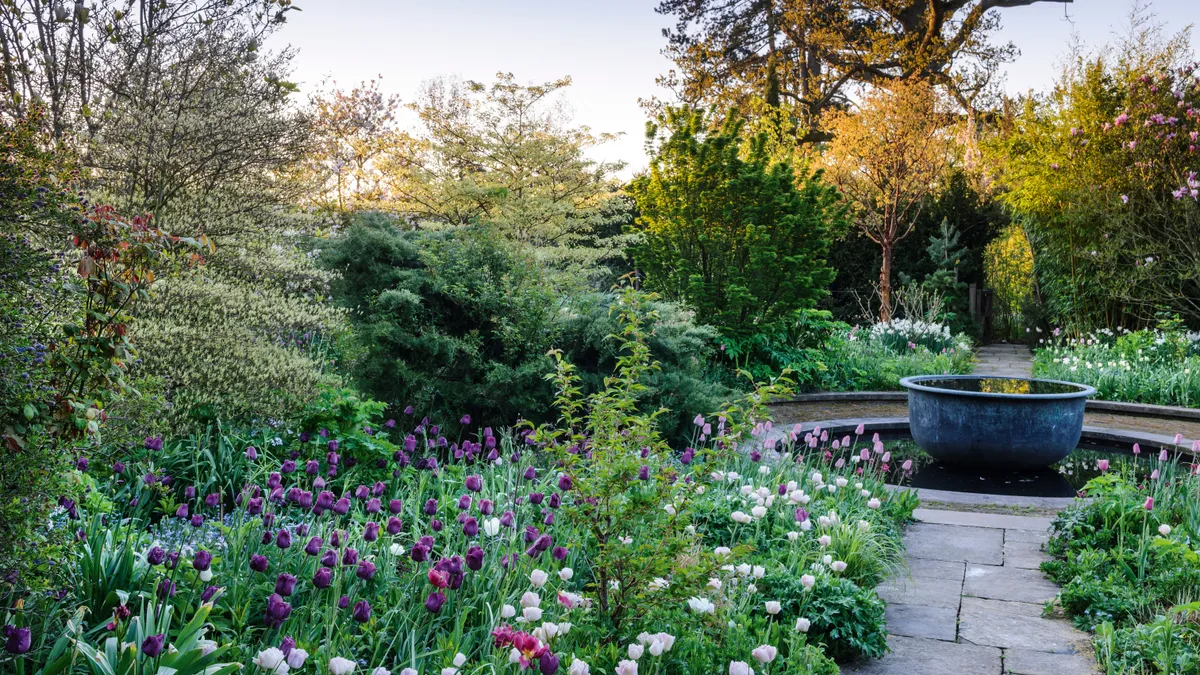
Positioning trees and shrubs in the mixed border needs careful consideration. When laying out borders it is critical to make them wide enough to entertain a few trees and shrubs without having to shoehorn them in. The summation of all the different plants working together will set the tone. We work the different shapes, textures and colours around each other to make the garden exciting. In the Cool Garden, Cornus alternifolia ‘Argentea’ with its pretty, layered habit and dainty leaves decorating the tips of every branch is contrasted with the moody, blue-green foliage of Juniperus ‘Grey Owl’. Nearby, Phyllostachys nigra, a black-caned bamboo, presents a strong, vertical accent, and the vase-shaped Acer palmatum ‘Shishigashira’ draws attention with dark, crinkled foliage on steeply ascending twigs. It is important to have strong shapes, particularly in the spring when many other border plants have yet to attain much height.
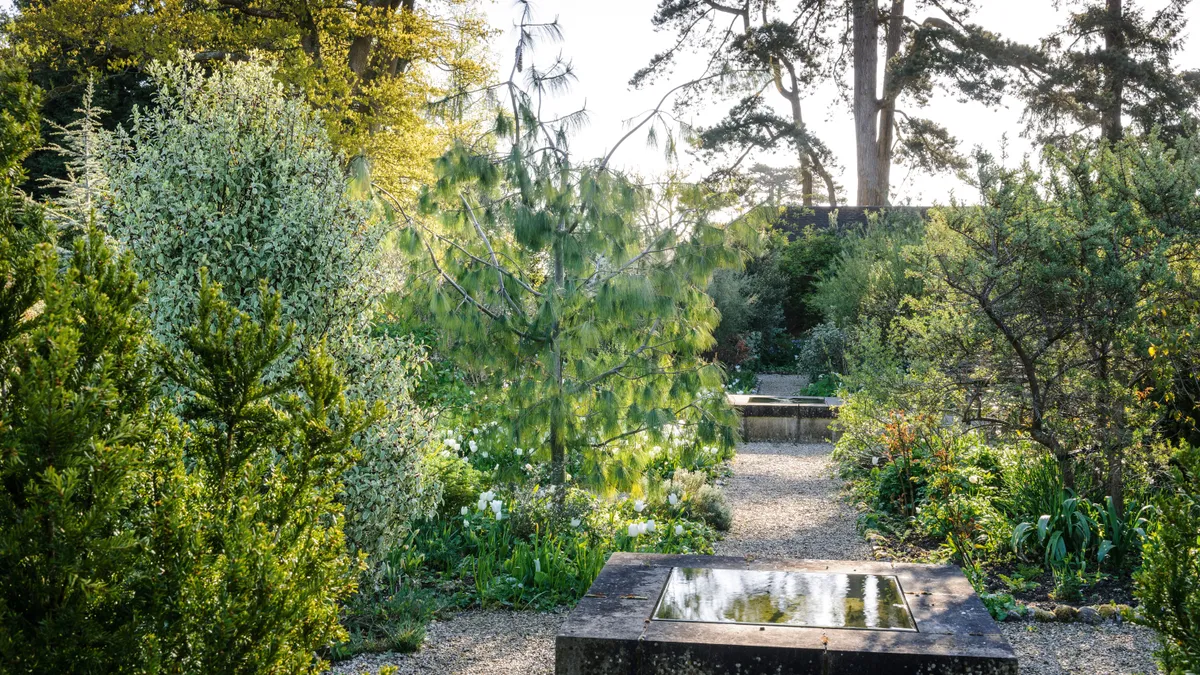
The structure
Although some of the finest effects come from trees and shrubs that bloom in spring, it is important not to be completely seduced by their early attire and to remember they must keep up appearances until late summer. Tree peonies are the picture of beauty in spring, but their foliage can shatter in summer and spoil a border prematurely. Cherries and crab apples can also be fleeting, and overplanting can leave a garden sulking for the rest of the year. Plants should earn their keep; this is especially important in small gardens where space is limited. One must be discerning and consider shape, ultimate size, texture, and how the foliage might age, in addition to the flowers. Prunus ‘Fugenzo’ is a fine cherry with shell-pink blooms that shatter into confetti when finished, rather than falling off in blobs. One of the more notable features is the separation of the flowers from the young, copper foliage via exceptionally long pedicels, which give the tree a tiered effect on all the branches. It also has vibrant autumn colour and a good winter outline.
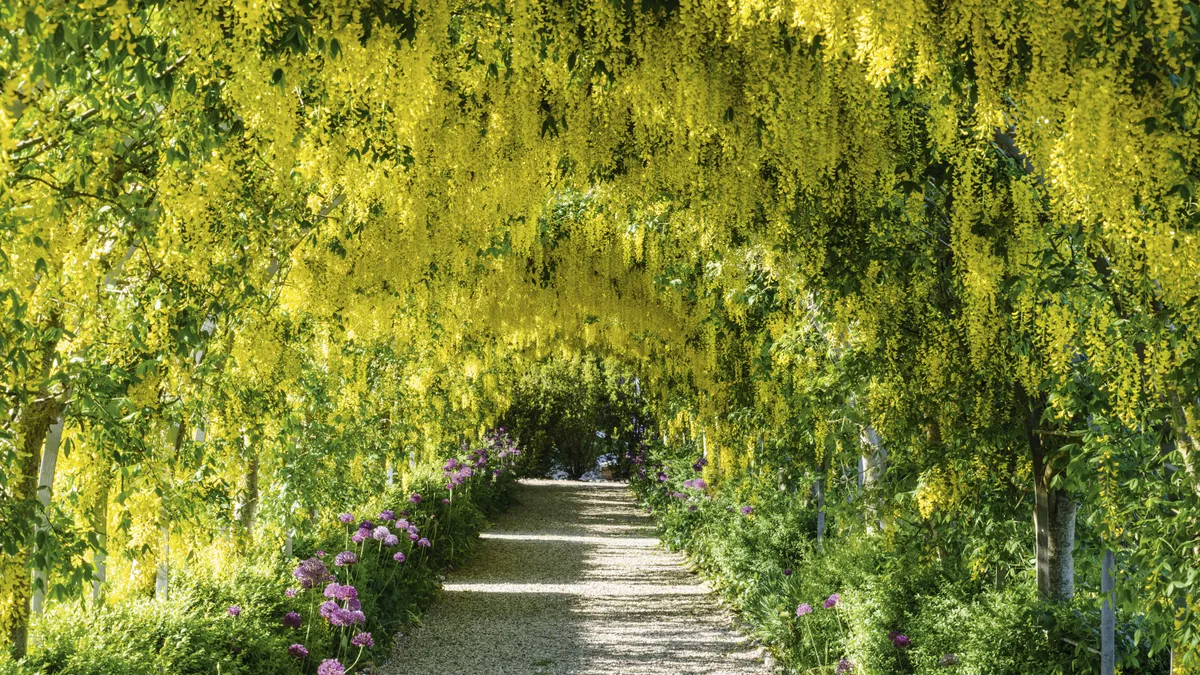
16 key plants from Malverleys in spring
1
Matteuccia struthiopteris

This early fern produces upright funnels of delicate, spring-green fronds from creeping rhizomes. A good coloniser for the woodland garden and associates nicely with woodruff. It can scorch i
2
Prunus ‘Fugenzo’

A beautiful Japanese cherry introduced into the UK around 1910 by plant hunter Ernest Wilson. It has long, thread-like pedicels that carry plump, pale-pink blossoms below the new bronzy foliage. 10m. AGM. RHS H6.
3
Juniperus recurva var. coxii
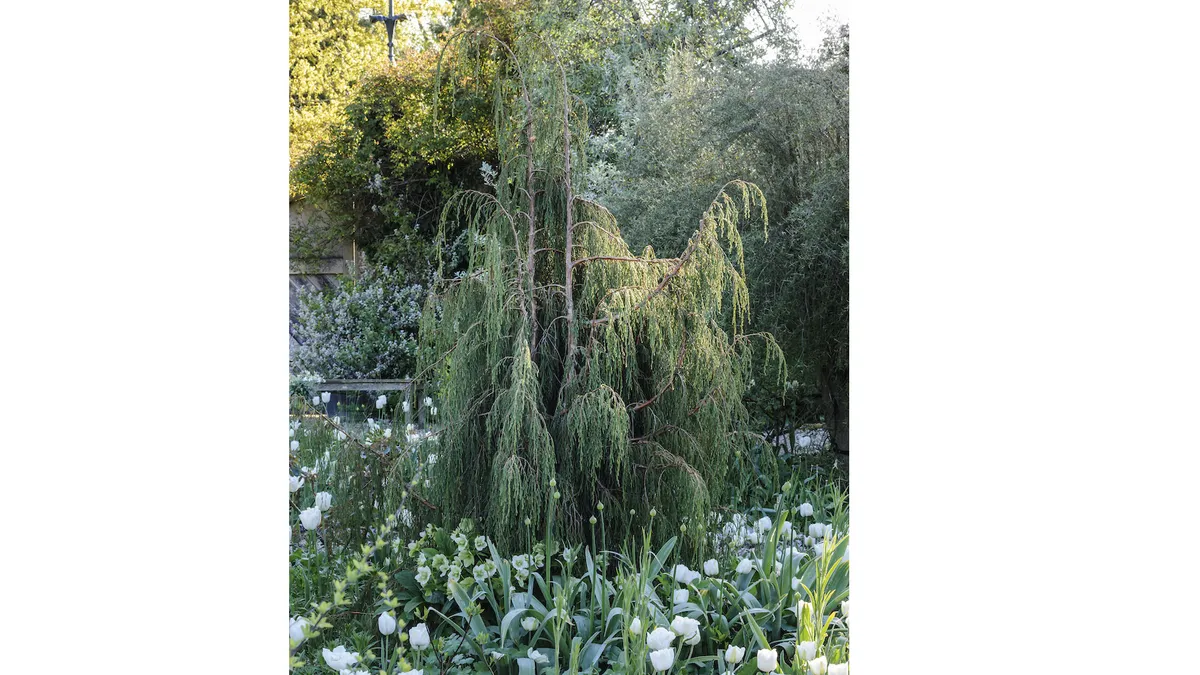
Collected in Aranuchal Pradesh by Michael Wickenden from a ridgeline we scaled in 2007. It has pendent, string-like stems covered in sharp, scaly foliage held on (typically) multi-stemmed trees. It makes a wonderful weeping conifer. 25m. RHS H5, USDA 6a-9b.
4
Cedrus atlantica ‘Glauca Fastigiata’
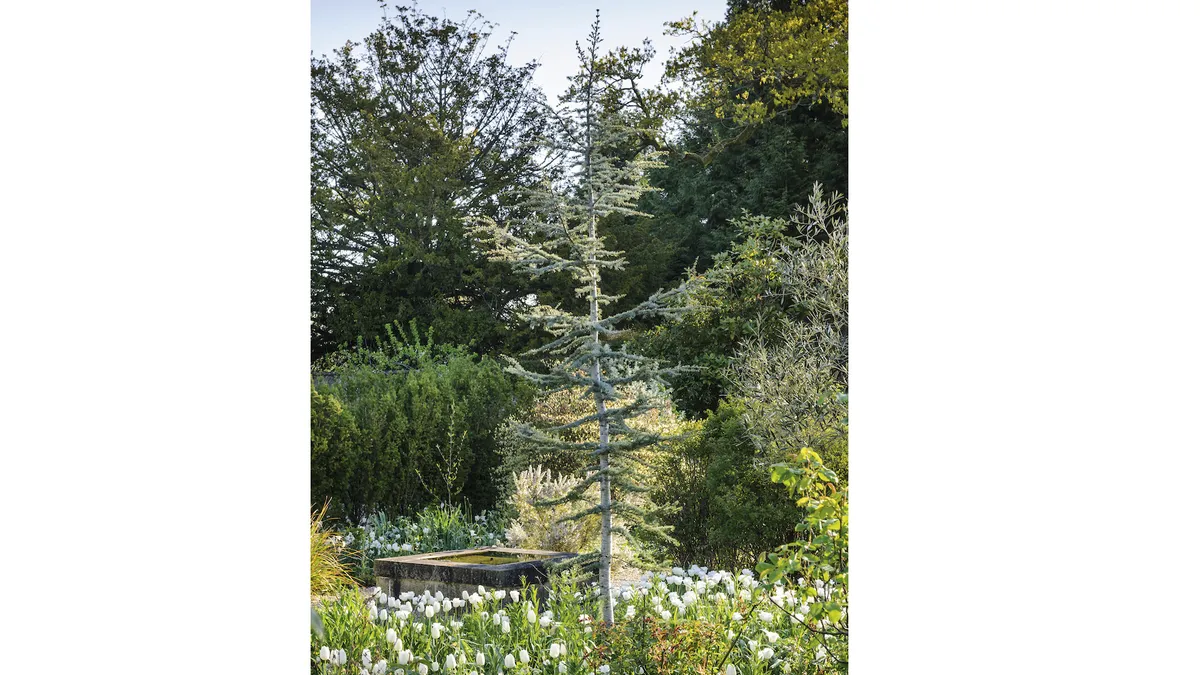
A selection of the Atlas cedar with a much slimmer habit than the type. It is quite slow-growing and can be pruned to keep it in proportion to the size of the garden. 15m. RHS H6, USDA 6a-9b.
5
Pinus bhutanica
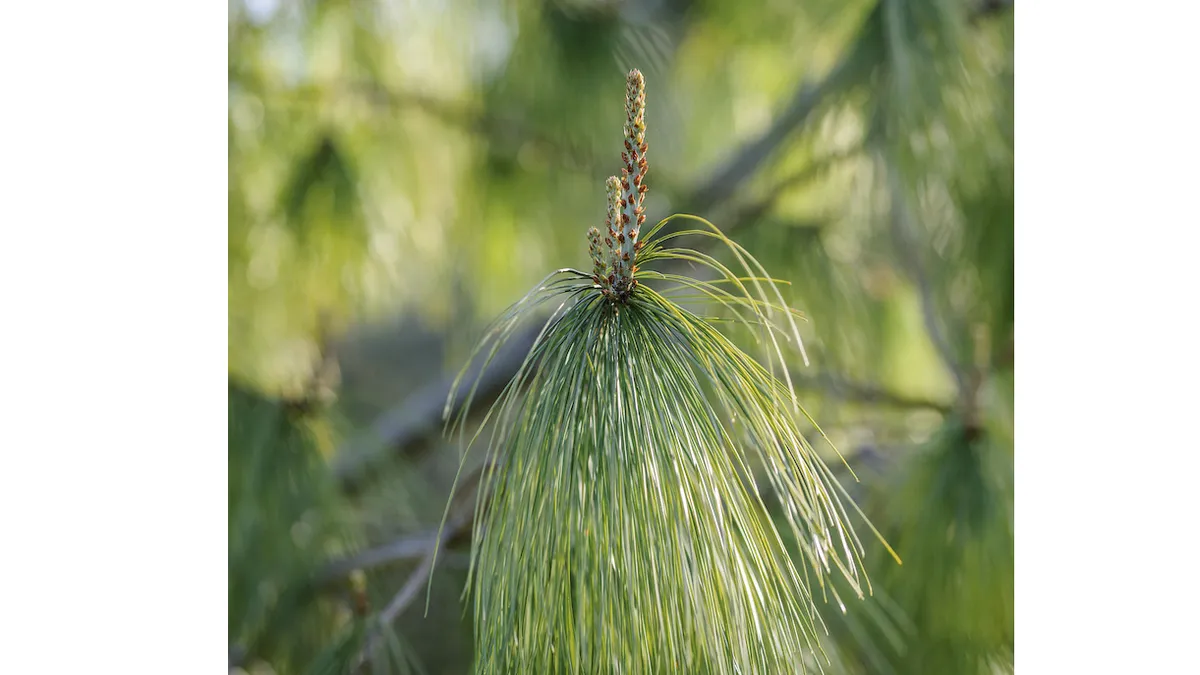
The Bhutan pine has long, pendent, glaucous needles held in bunches of five on ascending branches. The overall habit is very elegant, like a verdant Afghan hound. Prefers a sheltered site on good soil. 25m. RHS H5.
6
Pittosporum tenuifolium ‘Silver Queen’

Makes a dense shrub or small tree with masses of pretty, variegated, evergreen foliage. It can be clipped into shapes or a hedge. Inconspicuous, purple flowers are produced in the spring, and are sweetly scented. 4m. AGM. RHS H4.
7
Olea europaea
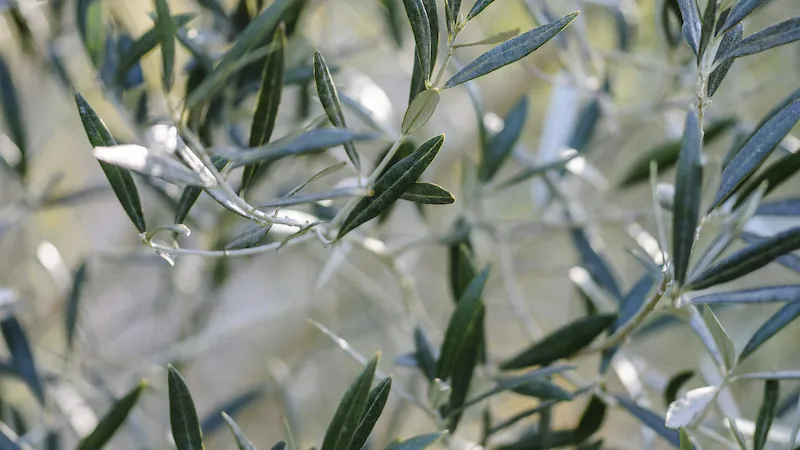
Makes a small, evergreen tree with glaucous foliage and deeply fissured bark. It has a twiggy habit and should be pruned or clipped in the spring. Best on light soils and a sunny, sheltered location. 3-4m. RHS H4, USDA 8a-10b.
8
Erica lusitanica
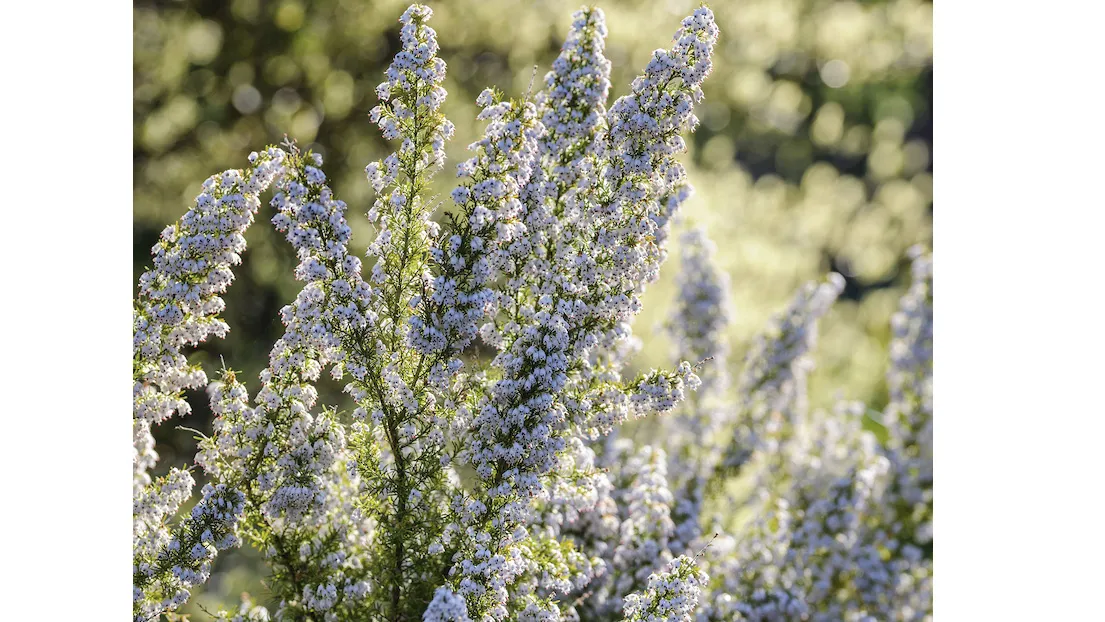
The Portugal heath makes a tall, growing heather with masses of small, white, bell flowers in spring. It has soft-textured foliage and an upright habit. Best on free-draining acidic soils, but will tolerate some alkalinity. 2.5m. AGM. RHS H4.
9
Nemophila menziesii ‘Total Eclipse’
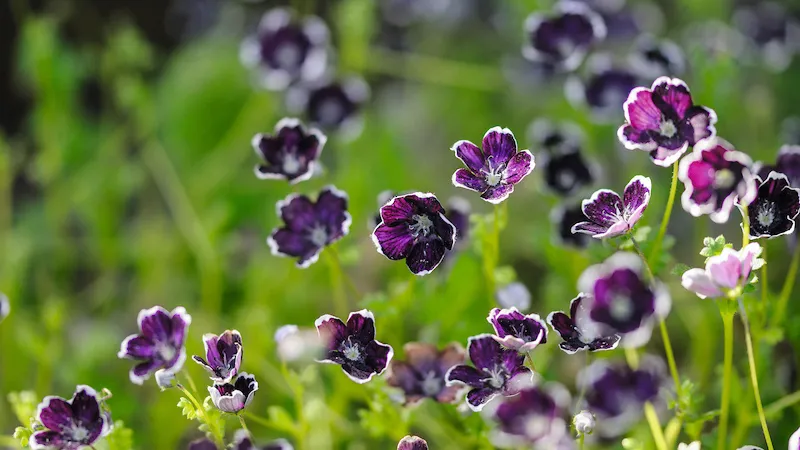
A sprightly, hardy annual with staring, black flowers edged in white. Where seedlings survive the winter it is quick to flower in the spring. Once grown, it will self-seed reliably on sharp soils or gravel. 20cm. RHS H5.
10
Galium odoratum
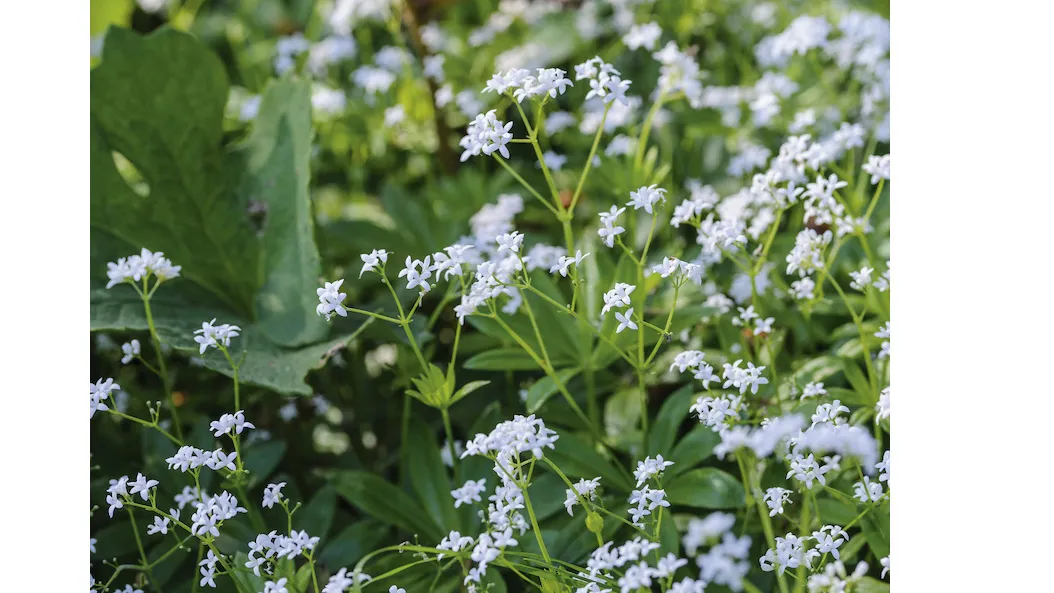
The native sweet woodruff is an exquisite, early flowering perennial. It carpets the ground with little ruffs of foliage held in tiered candelabras and topped off with sprays of miniature, white flowers.
20cm. RHS H7, USDA 4a-8b.
11
Rodgersia pinnata ‘Cally Salmon’
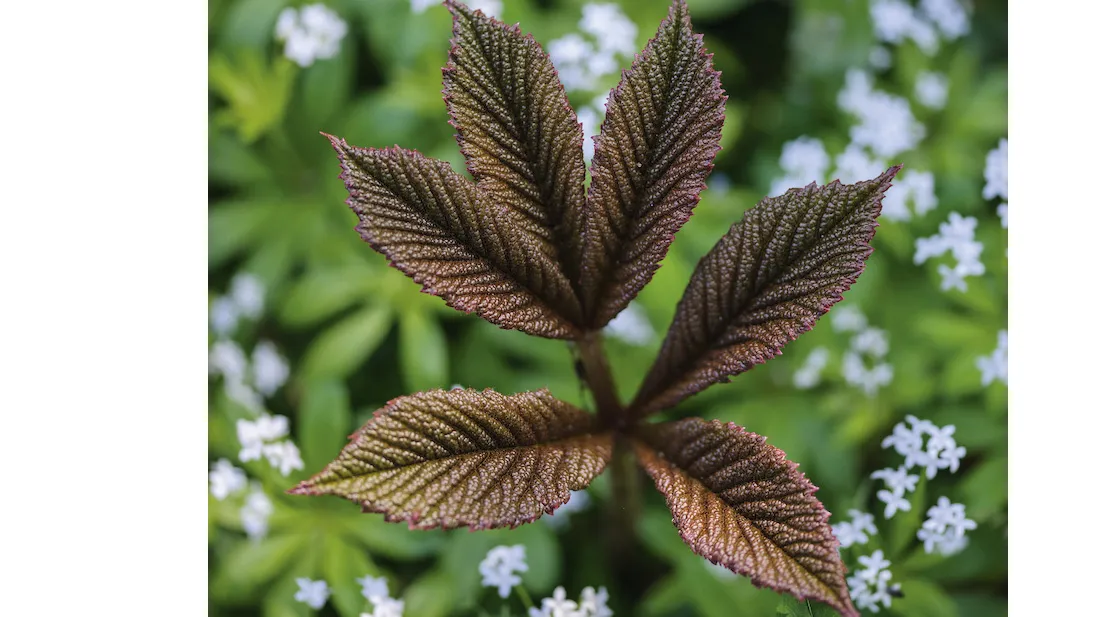
A selection from Cally Gardens in Scotland, chosen for its notable, salmon-pink flowers. The new growth is a delicious shade of bronze. This species is much more drought-tolerant than the widely grown R. podophylla. Ideally grown on moist, rich soils. 1m. RHS H6.
12
Tulipa ‘Black Hero’

One of the best of the dark tulips, and quite perennial in the garden at Malverleys. Makes spherical, double blooms on long, strong stems, and looks lovely associated with pale flowers or foliage background. 40cm. RHS H6.
13
Tulipa ‘Gavota’
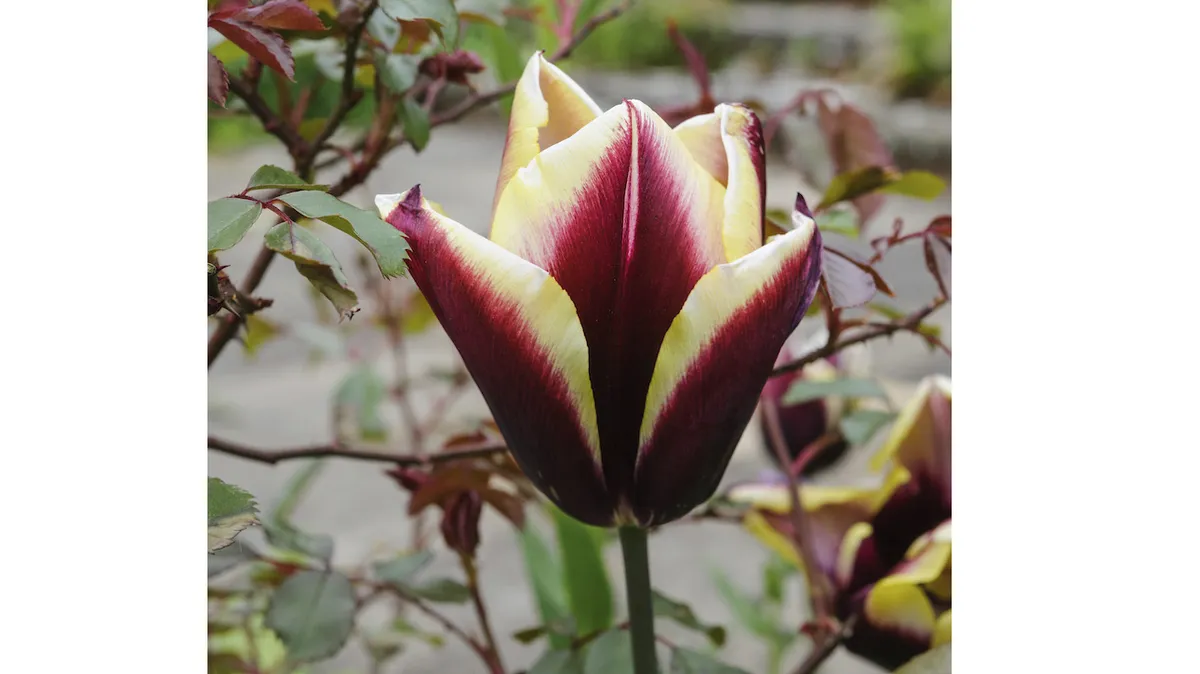
A triumph-type tulip that is strong-growing and has rain-resistant petals. It is a particularly striking, medieval, maroon and cream-yellow colour combination. We interplant it between perennials in
the autumn and winter. 50cm. AGM. RHS H6.
14
Tulipa ‘Don Quichotte’
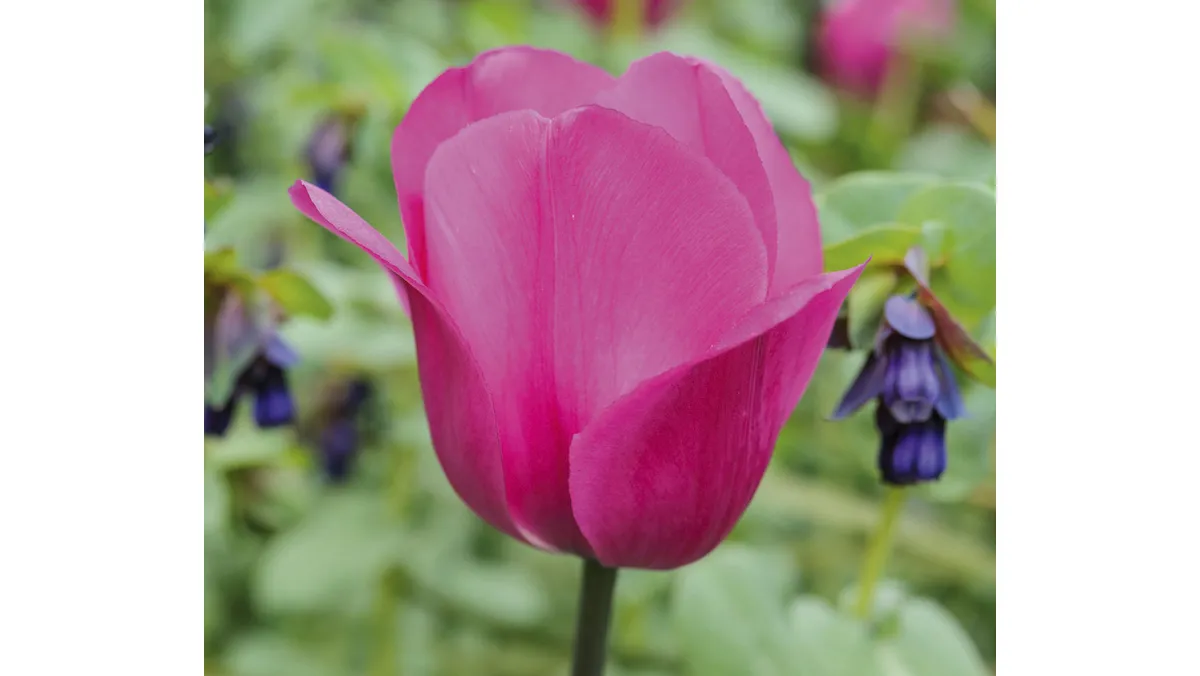
With shocking, magenta-pink flowers, this is an excellent tulip for contrasting with cooler colours. We combine them with autumn- sown Cerinthe major ‘Purpurascens’ or forget-me-nots. 55cm. AGM. RHS H6.
15
Astilboides tabularis

Makes a dramatic specimen with huge, disc-like leaves when given good soil and warm, moist summers. The leaf stems are attached in the middle of the leaf. It can scorch in dry soil. 50cm. RHS H6, USDA 5a-7b.
16
Tulipa ‘World’s Favourite’
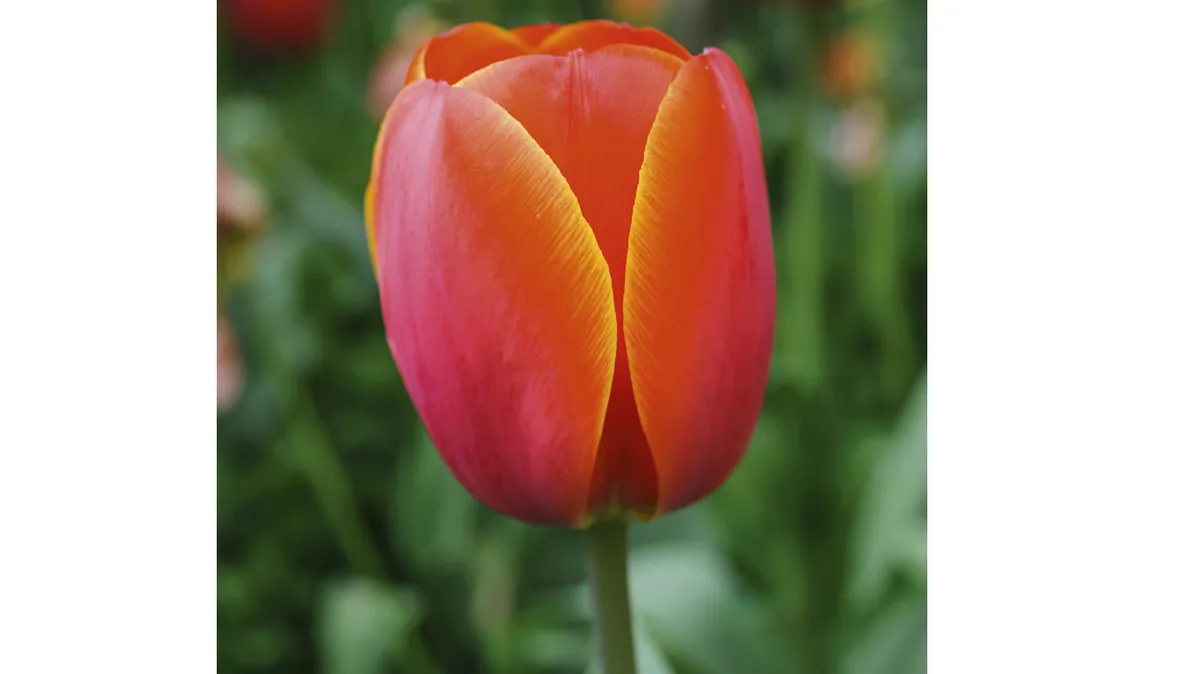
A brilliantly coloured tulip with very nicely proportioned, cup-shaped flowers presented on stout stems. It has a slight scent and looks lovely combined with the lush spring growth of perennials in a mixed border. 40cm. AGM. RHS H6.
USEFUL INFORMATION
Address Malverleys Gardens, East End, Hampshire RG20 0AA. Website malverleys.co.uk
Open The garden is open by appointment to groups only. Admission £10. Please book online via the website.